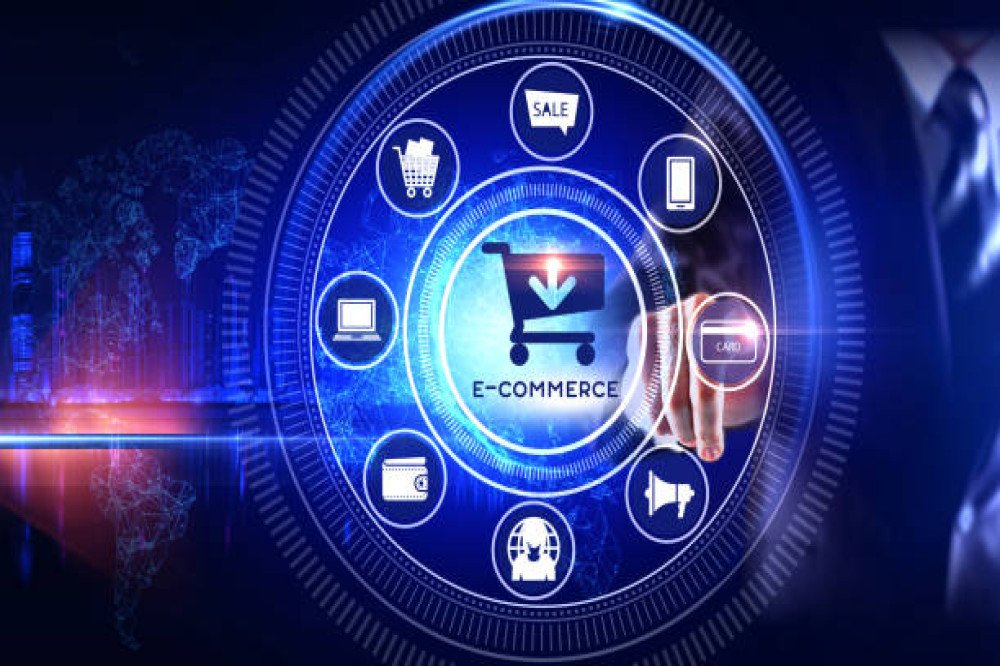
The world of trade has changed dramatically in the current digital era. The only players in the retail industry today are no longer the traditional brick-and-mortar establishments. Instead, the development of eCommerce websites is a result of the rise of the internet. In this post, we'll go in-depth on the idea of eCommerce websites, looking at its definition, purposes, and benefits as well as how they've transformed how we purchase.
A History of E-Commerce
Ecommerce Website Types
H2: (B2C) Business to consumer
H2:(B2B) Business-to-Business
H2:(C2C) Consumer to Consumer
Important Elements of E-Commerce Websites
H2: Product catalogs
H2: Carts for shopping
H2: Payment Gateways
H2: Ratings and Reviews from Users
Benefits of Online Shopping Websites
H2: Practicality
H2: Worldwide Reach
H2: Economical Pricing
H2: Individualization
Problems and worries
H2: Safety
H2: Rivalries
H2:Technical Problems
Future of Online Commerce
Conclusion
FAQs
The term "ecommerce," which stands for "electronic commerce," describes the exchange of products and services over the internet. These transactions are made possible through a digital platform called an e-commerce website. In essence, it functions as an online store where companies can display their goods or services and customers can explore, choose, and buy from the convenience of their own devices.
Since its inception, e-commerce has advanced significantly. Although it began with simple online transactions, it now includes a wide range of activities, such as digital downloads, subscription services, and online markets
Consumers may be most familiar with B2C e-commerce platforms. Direct sales to individual customers are made on these websites. eBay and Amazon are two examples.
Businesses selling goods or services to other businesses is known as B2B e-commerce. Larger amounts and trickier negotiations are frequently involved in these transactions. Consider how companies might source goods or services online.
Consumers can sell goods or services to other consumers directly through C2C ecommerce platforms. This group includes websites like Craigslist and Facebook Marketplace.
E-commerce websites present goods and services in a well-organized catalog. Detailed descriptions, pictures, and prices are often included for each product.
Users can add products they want to buy to shopping carts and then review them before checking out.
Payment gateways safely complete transactions while protecting the security of consumer data.
For the purpose of assisting customers in making wise decisions, several e-commerce websites include user-generated reviews and ratings.
The convenience that e-commerce offers is one of its main benefits. Customers can explore and buy products around-the-clock from any location with an internet connection.
Ecommerce websites eliminate geographic limitations, enabling companies to access clients everywhere.
With fewer overhead costs like rent and utilities, operating an online store may be more cost-effective than operating a physical one.
By presenting products based on previous purchases and interests, e-commerce websites leverage data to personalize the shopping experience.
Ecommerce websites need to emphasize security to safeguard user information and financial transactions from online dangers.
Due to the intense competition in the digital industry, organizations must employ strong techniques to distinguish out.
Customer annoyance and lost purchases might result from technical difficulties or website outage.
The prospects for e-commerce are bright. We may anticipate advancements like augmented reality shopping experiences and quicker, more secure payment ways as technology develops.
In conclusion, the convenience, worldwide reach, and personalization that e-commerce websites provide have completely changed the way we shop. They do, however, also have drawbacks, such as security issues and intense rivalry. The world of ecommerce will develop along with technology, creating new opportunities for both consumers and businesses.
Businesses that engage in B2B e-commerce sell to other businesses, and those that engage in B2C e-commerce sell to consumers directly.
Security is a top priority for e-commerce companies to safeguard customer data, but it's crucial to exercise caution when disclosing personal information online.
Yes, there are numerous platforms and tools available to aid in the creation of personal or professional e-commerce websites.
User evaluations offer insightful information to future customers and can affect purchasing choices.
Future developments in e-commerce could include greater customization, virtual reality purchasing,